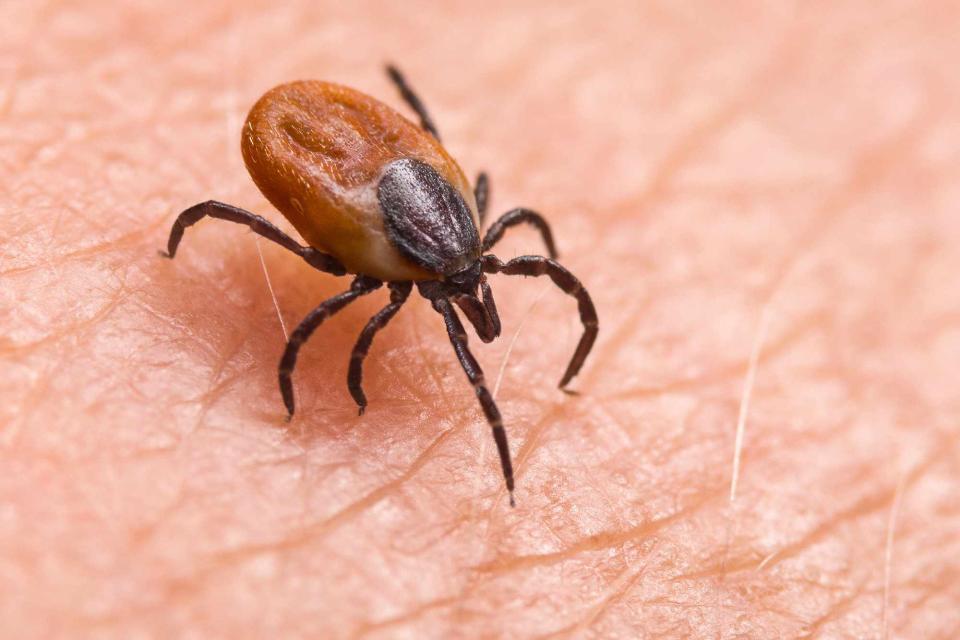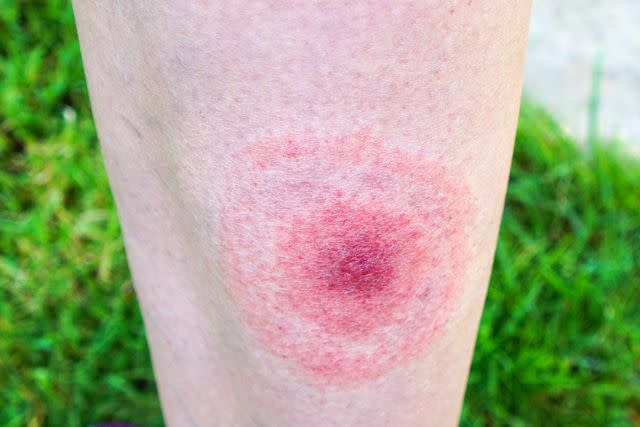Bella Hadid Has Struggled With Lyme Disease — Here's What to Know About the Tick-Borne Illness
- Oops!Something went wrong.Please try again later.
- Oops!Something went wrong.Please try again later.
Lyme disease spreads through the bite of an infected tick, and can lead to life-altering complications if untreated

Getty
Black-legged ticks — also called deer ticks — can spread Lyme disease.Bella Hadid recently shared that she’s “finally healthy” after dealing with Lyme disease for more than a decade.
The model, 26, posted a health update on Sunday, sharing that she is feeling better after “100+ days of Lyme, chronic disease, [co-infection] treatment [and] almost 15 years of invisible suffering.”
“The little me that suffered would be so proud of grown me for not giving up on myself🫶🏼,” Hadid began the Instagram post, adding that she is grateful for mom Yolanda Hadid, who was also diagnosed with Lyme disease in 2012 along with the youngest Hadid sibling, Anwar.
“There are rough days when you sleep 12 hours, you wake up at 11 and you can’t get out of bed, with severe joint pain, brain fog, anxiety,” Yolanda previously told PEOPLE. “There are a lot of symptoms that you can’t see from the outside but bring you to your knees on the inside.”
Never miss a story — sign up for to stay up-to-date on the best of what PEOPLE has to offer, from celebrity news to compelling human interest stories.PEOPLE's free daily newsletter.
The debilitating Lyme disease is caused by the borrelia bacteria, which is usually transmitted to humans through the bite of a black-legged tick, also known as a deer tick. The tick needs to be attached for 36 to 48 hours to transmit the virus, according to the CDC.
Symptoms can show up anywhere from 3 to 30 days after a tick bite, which presents as a small, itchy red bump, often resembling a mosquito bite.
The distinguishing symptom is a specific “bullseye” rash known as erythema migrans, in which the bite of an infected tick is surrounded by a red ring, according to the Mayo Clinic.

Getty
The telltale "bullseye" rash that often signifies the bite of an infected tick.Lyme disease progresses in stages. In the early stages immediately after a bite, symptoms may include fever, tiredness, body aches, joint stiffness, and swollen lymph nodes, according to the Mayo Clinic.
At this stage, a 10- to 14-day course of antibiotics is usually prescribed. Doctors may also prescribe antibiotics preventatively when someone has been bitten by a deer tick that was attached to the skin for more than 36 hours — especially if they live in an area where Lyme is active, like the Northeastern United States.
If Lyme goes untreated, however, the bacteria can spread throughout the body and the disease can progress to the next, more serious stage, which can show up anywhere from 3 weeks to 10 weeks after the initial tick bite.
At this stage, symptoms are more severe, and include facial palsy, according to the CDC, which is marked by loss of muscle or a “droop on one or both sides of the face,” as well as severe headaches, arthritis — particularly the knees — nerve pain (when it spreads to the nervous system, called neurologic Lyme), and inflammation in the brain and spinal cord.
If the bacteria spreads to the heart, it can cause a condition known as Lyme carditis, which impacts how the heart beats, according to the CDC. While IV antibiotics are used to treat Lyme carditis, some patients require a temporary pacemaker.
Lyme carditis occurs in one out of every hundred cases, but a more common complication is Lyme arthritis, which occurs in 25% of those with the disease. Bacteria enters the joints, causing swelling, inflammation, and pain. Antibiotics are again the treatment, but Lyme arthritis that goes untreated may cause permanent damage to the joints, the CDC says.
The CDC estimates that 476,000 people are diagnosed and treated for Lyme each year, making it the most common vector-borne (meaning, transmitted by the bite of a flea, mosquito, or tick) disease in the United States.
There currently is not a vaccine for the disease — although clinical trials are “underway,” the CDC says — so the best way to avoid Lyme is to avoid getting bitten by ticks.
Spray clothing and gear with 0.5% permethrin if you’re going to be outdoors in an area where ticks are active, and use bug spray containing DEET, picaridin, IR3535, Oil of Lemon Eucalyptus (OLE), para-menthane-diol (PMD), or 2-undecanone, the CDC says.
Related: Celebrities Who've Talked About Battling Lyme Disease

Getty
Bug spray can help you stay safe when outdoors in areas ticks can be found.Examine yourself, pets, and children for ticks — focusing on the ears, underarms, belly buttons, and any other place where a tick could hide.
If you find a tick, the CDC cautions that you take care when removing it, as you want to avoid the head breaking off and remaining in the skin.
Other tick-bourne illnesses, like babesiosis, have seen an increase in cases due to climate change, creating warmer winters and longer summers. That means the population of ticks — including those that carry Lyme — has grown, NPR says, noting that they’re now active earlier in the spring, and stay active through the fall.
For more information on ticks — and what to do if you’re bitten by a tick — visit the CDC’s website.
For more People news, make sure to sign up for our newsletter!
Read the original article on People.

